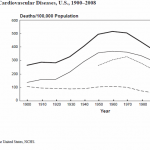Congratulations!
BU faculty, graduate students and alumni appear prominently in the program of the Allied Social Sciences Association (ASSA) meetings (aka the AEA meetings), scheduled to be held in San Diego January 4-6, 2013. Altogether their names appear as presenters, authors, chairs or discussants at least 73 times. Seventeen different economics faculty are listed as participants (up from 12 in 2012). I see many colleagues from SMG and SPH as well.
Names of BU faculty, graduate students and alumni on the preliminary program of the ASSA are shown on the extract below in Bold. (Also shown are the times and rooms in case you have not looked yet.) My apologies for the incompleteness of this listing, since finding alumni in particular is challenging. I am sure I missed many more alumni.
Well done colleagues!
The full ASSA preliminary program is listed here. http://www.aeaweb.org/aea/2013conference/program/preliminary.php
(Also, not too early to begin planning for your presentation at ASSA 2014, which will be in Philadelphia Jan 3-5, 2014, or for 2015 in Boston!)
Be sure to plan on attending the BU reception at the ASSA which will be
Saturday, January 5, 6:00-8:00 pm, Manchester Grand Hyatt-Gregory A & B
Here is the full roster of BU participants/coauthors
Jan 04, 2013 8:00 am, Manchester Grand Hyatt, Molly A & B
American Economic Association
The Market for Medicines in Developing Countries (O1)
Drug Quality and the Development of Private Retail Pharmacy Markets
Wesley Yin (Boston University)
Dan Bennett (University of Chicago)
Jan 04, 2013 8:00 am, Manchester Grand Hyatt, Gibbons
Econometric Society
Product Markets (D4)
Durable Goods Monopoly with Stochastic Costs
Juan Matias Ortner (Princeton University)
Discussants:
Juan Matias Ortner (Princeton University)
Jan 04, 2013 8:00 am, Manchester Grand Hyatt, Elizabeth Ballroom A
American Economic Association
The Organizational Economics of Multinational Firms (F2)
Discussants:
Andrew Newman (Boston University)
Stefania Garetto (Boston University)
Jan 04, 2013 10:15 am, Manchester Grand Hyatt, Manchester D
American Economic Association
Finance (G1) (Poster Session)
Do Humans Perceive Temporal Order in Asset Returns?
Jasmina Hasanhodzic (Boston University)
Andrew Lo (Massachusetts Institute of Technology)
Emanuele Viola (Northeastern University)
Jan 04, 2013 10:15 am, Manchester Grand Hyatt, Gregory A & B
American Economic Association
Financial Intermediation and Financial Crisis (E5)
Presiding: Jianjun Miao (Boston University)
Banking Bubbles and Financial Crisis
Jianjun Miao (Boston University)
Pengfei Wang (Hong Kong University of Science and Technology)
Demand Creates its Own Supply
Christophe Chamley (Boston University)
Discussants:
Simon Gilchrist (Boston University)
Jan 04, 2013 10:15 am, Manchester Grand Hyatt, Edward A
American Economic Association
Global Production Chains (F1)
Do Prices Determine Vertical Integration? Evidence from Trade Policy
Laura Alfaro (Harvard Business School)
Paola Conconi (Universite Libre de Bruxelles)
Harald Hadinger (University of Vienna)
Andrew Newman (Boston University)
Jan 04, 2013 10:15 am, Manchester Grand Hyatt, Elizabeth Ballroom G
American Economic Association
Work on Women's Work is Never Done (J2)
Shocking Female Labor Supply: A Reassessment of the Impact of World War II on U.S. Women's Labor Supply
Claudia Goldin (Harvard University)
Claudia Olivetti (Boston University)
Jan 04, 2013 10:15 am, Manchester Grand Hyatt, Ford B
International Health Economics Association
Health Insurance Market Innovations (I1)
Presiding: Wesley Yin (Boston University and NBER)
Discussants:
Dara Lee (University of Missouri)
Jan 04, 2013 10:15 am, Manchester Grand Hyatt, Ford C
National Tax Association
Health Care Cost Containment (I1)
Age-Based Heterogeneity and Pricing Regulation on the Massachusetts Health Insurance Exchange
Keith Marzilli Ericson (Boston University and NBER)
Jan 04, 2013 2:30 pm, Manchester Grand Hyatt, Elizabeth Ballroom C
American Economic Association
Markups, Customer Base and Business cycles (E2)
Presiding: Leena Rudanko (Boston University)
Inflation Dynamics during the Financial Crisis: Microeconomic Evidence on the Linkages between Price-Setting and Balance Sheet Conditions
Simon Gilchrist (Boston University)
Egon Zakrajsek (Federal Reserve Board)
Raphael Schoenle (Brandeis University)
Customer Capital and Business Cycles
Francois Gourio (Boston University)
Leena Rudanko (Boston University)
Discussants:
Christopher House (University of Michigan)
Jan 04, 2013 2:30 pm, Manchester Grand Hyatt, Cunningham A & B
Econometric Society
Nature of Labor Income Risk (E2)
Reconciling Estimates of Income Processes in Growth Rates and Levels
Moira Daly (Copenhagen Business School)
Dmytro Hryshko (University of Alberta)
Iourii Manovskii (University of Pennsylvania)
Jan 04, 2013 2:30 pm, Manchester Grand Hyatt, Manchester F
American Economic Association
The Political Economics of Momentum, Persistence and Information (D8)
The Persistence of Political Partisanship: Evidence from 9/11
Sharun Mukand (University of Warwick)
Ethan Kaplan (University of Maryland)
Jan 04, 2013 2:30 pm, Manchester Grand Hyatt, Randle B
American Economic Association
Developments in Health and Population Economics (I1)
Explaining the Birth Order Effect: The Role of Prenatal and Early Postnatal Conditions
Jee-Yeon K. Lehmann (University of Houston)
Ana Nuevo-Chiquero (University of Barcelona)
Marian Vidal-Fernandez (University of New South Wales)
The Impact of Childhood Health on Adult Educational Attainment: Evidence from Mandatory School Vaccination Laws
Dara N. Lee (University of Missouri)
Jan 04, 2013 2:30 pm, Manchester Grand Hyatt, Edward C
American Economic Association
Medical Treatment (I1)
Presiding: Kathleen Carey (Boston University)
Technology Diffusion and Learning Spillovers in Health Care: Evidence from New Cancer Drugs
Leila Agha (Boston University)
David Molitor (Massachusetts Institute of Technology)
Negative Tests and the Efficiency of Medical Care: Investigating the Determinants of Imaging Overuse
Jason Abaluck (Yale University)
Leila Agha (Boston University)
Jan 05, 2013 7:45 am, Marriott Marquis & Marina, Santa Rosa
Association for Social Economics
Presidential Breakfast
Martha Starr (President, ASE) (American University) The Social Responsibility of Business Through a Social-Economics Lens
Jan 05, 2013 8:00 am, Manchester Grand Hyatt, Ford A
American Economic Association
Economic History (N0)
The Persistence of the Inquisitorial Mind: Long-Run Effects of the Spanish Inquisition
Jordi Vidal-Robert (Boston University)
Jan 05, 2013 8:00 am, Manchester Grand Hyatt, Molly A & B
American Economic Association
Discussants:
Daniele Paserman (Boston University)
Jan 05, 2013 8:00 am, Manchester Grand Hyatt, Edward C
American Economic Association
Recent Developments in Consumer Bankruptcy Research (K3)
Social Networks and Personal Bankruptcy
Michelle Miller (Rutgers University)
Jan 05, 2013 8:00 am, Manchester Grand Hyatt, Cunningham C
Econometric Society
Incentive Pay and Competition (G3)
Rising Through the Ranks: The Evolution of the Market for Corporate Executives, 1936-2003
Carola Frydman (Boston University)
Jan 05, 2013 10:15 am, Manchester Grand Hyatt, Elizabeth Ballroom B
American Economic Association
Default Risk and Aggregate Fluctuations (E3)
Presiding: Francois Gourio (Boston University)
Default Risk Premia and Investment in a DSGE model
Francois Gourio (Boston University)
Jan 05, 2013 10:15 am, Manchester Grand Hyatt, Edward A & B
American Economic Association
Youth Behavior (J1)
No Pass No Drive: Education and Allocation of Time
Rashmi Barua (Singapore Management University)
Marian Vidal Fernandez (UNSW)
Jan 05, 2013 10:15 am, Manchester Grand Hyatt, Randle D
American Economic Association
Economic Analysis of Environmental Policy (Q5)
Climate Change and U.S. Electric Power
Ian Sue Wing (Boston University)
Karina Veliz Roja (Boston University)
Tim Fuerst (University of Notre Dame)
Jan 05, 2013 10:15 am, Manchester Grand Hyatt, Manchester F
American Economic Association
Financial Policies: Lessons from Historical and Long Run Perspectives (G1)
Economic Effects of Runs on Early "Shadow Banks": Trust Companies and the Impact of the Panic of 1907
Carola Frydman (Boston University)
Eric Hilt (Wellesley College)
Lily Zhou (Federal Reserve Bank of New York)
Jan 05, 2013 10:15 am, Manchester Grand Hyatt, Edward C
American Economic Association
Gender, Trade and Productivity Shocks (J1)
Presiding: Claudia Olivetti (Boston University)
Discussants:
Claudia Olivetti (Boston University)
Jan 05, 2013 10:15 am, Manchester Grand Hyatt, Gibbons
Econometric Society
Testing (C1)
Discussants:
Hiroaki Kaido (Boston University)
Jan 05, 2013 10:15 am, Marriott Marquis & Marina, La Costa
Health Economics Research Organization
Medical Interventions and Patient Offsetting Behavior (I1)
Does Statin Use Adversely Affect Health Behaviors?
Robert Kaestner (University of Illinois and NBER)
Michael Darden (Tulane University)
Darius Lakdawalla (University of Southern California and NBER)
Wesley Yin (Boston University and NBER)
Jan 05, 2013 2:30 pm, Manchester Grand Hyatt, Randle D
American Economic Association
Intangible Capital and Asset Prices (G1)
Customer Capital
Francois Gourio (Boston University)
Leena Rudanko (Boston University)
Jan 05, 2013 2:30 pm, Manchester Grand Hyatt, Molly A & B
American Economic Association
Plan Choice and Switching Costs in Health Insurance Market (I1)
Dynamic Plan Choice in Medicare Part D - Quantifying Switching Costs
Chao Zhou (University of Pittsburgh)
Yuting Zhang (University of Pittsburgh)
Jan 05, 2013 2:30 pm, Manchester Grand Hyatt, Manchester A
American Economic Association
Labor Market Networks (J2)
Discussants:
Kevin Lang (Boston University)
Jan 05, 2013 2:30 pm, Manchester Grand Hyatt, Emma A & B
American Economic Association
The Impacts of Great Society Programs (N3)
Discussants:
Robert Margo (Boston University)
Jan 05, 2013 2:30 pm, Manchester Grand Hyatt, Cunningham C
Econometric Society
New Developments in Empirical Modeling of Games (C5)
Random Coefficients in Static Games of Complete Information
fabian dunker (University of Goettingen)
Stefan Hoderlein (Boston College)
Hiroaki Kaido (Boston University)
Jan 05, 2013 2:30 pm, Marriott Marquis & Marina, Torrey Pines 1
Society for Computational Economics
Inference in DSGE-type models (C3)
Frequency Domain Analysis of Medium Scale DSGE Models with Application to Smets and Wouters (2007)
Zhongjun Qu (Boston University)
Denis Tkachenko (Boston University)
Jan 06, 2013 8:00 am, Manchester Grand Hyatt, Windsor B & C
American Economic Association
Family Formation (J1)
Why Have Divorce Rates Fallen? The Role of Women's Age at Marriage
Dana Rotz (Mathematica Policy Research)
Jan 06, 2013 8:00 am, Manchester Grand Hyatt, Molly A & B
American Economic Association
Health Care Labor Markets (J4)
Presiding: Patricia Cortes (Boston University)
The Relative Quality of Foreign Nurses in the US
Patricia Cortes (Boston University)
Jessica Pan (National University of Singapore)
Discussants:
Wes Yin (Boston University)
Jan 06, 2013 8:00 am, Manchester Grand Hyatt, Manchester G
American Economic Association
Woman and Labor Markets (J1)
Sexual Violence against Women and Labor Market Outcomes
Joseph J. Sabia (San Diego State University)
Angela Dills (Providence College)
Jeffrey DeSimone (University of Maryland)
Discussants:
Kevin Lang (Boston University)
Jan 06, 2013 10:15 am, Manchester Grand Hyatt, Gregory A & B
American Economic Association
Assessing the Impacts of Job Loss (J6)
The Long-Term Impact of Job Displacement in Germany during the 1982 Recession on Earnings, Income, and Employment
Johannes Schmieder (Boston University)
Till Von Wachter (Columbia University)
Stefan Bender (Institute for Employment Research)
Jan 06, 2013 10:15 am, Manchester Grand Hyatt, Edward A
American Economic Association
Information, Health, and Insurance (I1)
Presiding: Keith Ericson (Boston University)
How Product Standardization Affects Choice: Evidence from the Massachusetts Health Insurance Exchange
Keith Marzilli Ericson (Boston University)
Amanda Starc (University of Pennsylvania)
Jan 06, 2013 10:15 am, Manchester Grand Hyatt, Elizabeth Ballroom A
American Economic Association
Measurement Issues in the National Accounts
Price Indexes for Clinical Trial Research: A Feasibility Study
Ernst R. Berndt (Massachusetts Institute of Technology and NBER)
Iain M. Cockburn (Boston University and NBER)
Jan 06, 2013 10:15 am, Marriott Marquis & Marina, Cardiff & Carlsbad
American Finance Association
Compensation and Incentives (G3)
Discussants:
Carola Frydman (Boston University)
Jan 06, 2013 10:15 am, Manchester Grand Hyatt, America's Cup A & B
Econometric Society
Labor Markets and the Aggregate Economy (J6)
Unions in a Frictional Labor Market
Per Krusell (Stockholm University)
Leena Rudanko (Boston University)
Jan 06, 2013 10:15 am, Manchester Grand Hyatt, Gibbons
Econometric Society
Weakly Identified Models (C2)
Presiding: Zhongjun Qu (Boston University)
Bonferroni-Based Size-Correction for Nonstandard Testing Problems
Adam McCloskey (Brown University)
Local and Global Parameter Identification in DSGE Models Allowing for Indeterminacy
Zhongjun Qu (Boston University)
Denis Tkachenko (National University of Singapore)
Jan 06, 2013 10:15 am, Marriott Marquis & Marina, Laguna
Labor & Employment Relations Association
Unionization and Occupational Licensing: Similarities and Differences (J5)
Discussants:
David Weil (Boston University)
Jan 06, 2013 10:15 am, Marriott Marquis & Marina, Torrey Pines 3
National Economic Association
The Legacy of the War on Poverty (H3)
Discussants:
Robert Margo (Boston University)
Jan 06, 2013 1:00 pm, Manchester Grand Hyatt, Elizabeth Ballroom F
American Economic Association
Causes and Consequences of Credit Default Swap Trading (G1)
The Anatomy of the CDS Market
Martin Oehmke (Columbia University)
Adam Zawadowski (Boston University)
Jan 06, 2013 1:00 pm, Manchester Grand Hyatt, Randle E
American Economic Association
Impacts of Unilateral Climate Change Policy (Q5)
Discussants:
Ian Sue Wing (Boston University)
Jan 06, 2013 1:00 pm, Manchester Grand Hyatt, Manchester H & I
American Economic Association
Economic Analysis of Subjective Well-being
Aggregating Subjective Well-being for Marginal Policy Adjustments
Daniel Benjamin (Cornell University)
Ori Heffetz (Cornell University)
Miles Kimball (University of Michigan)
Nichole Szembrot (Cornell University)
--
_________________________________________
Randall P. Ellis, Ph.D.
Professor, Department of Economics, Boston University
270 Bay State Road, Boston MA 02215 USA
tel: 617-353-2741 ellisrp@bu.edu http://blogs.bu.edu/ellisrp/



